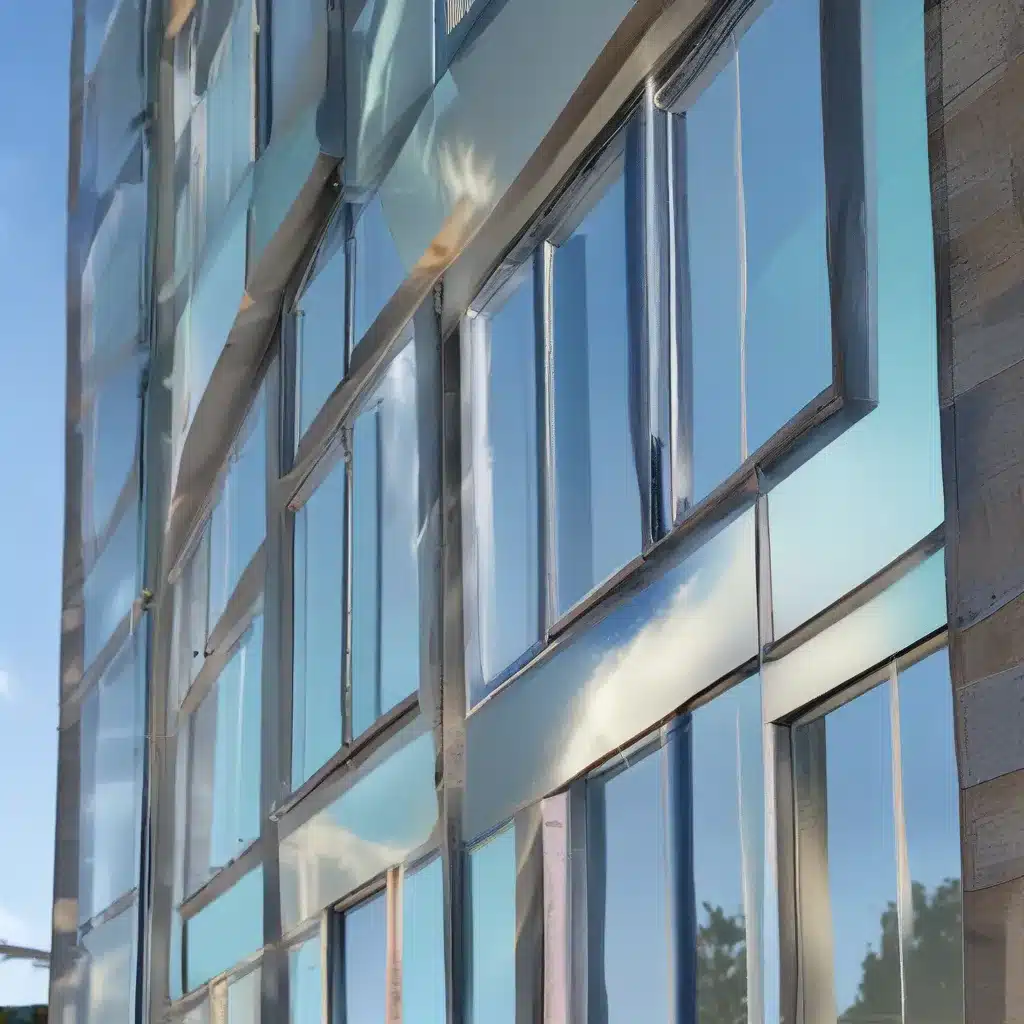
The Future of Solar Energy is Crystal Clear
As I gaze out my office window, I can’t help but feel a twinge of envy. Not because of the view – although the sprawling cityscape is rather captivating. No, what’s got me mesmerized are the rows of transparent solar panels that cover the facade of the skyscraper across the street. It’s a sight that fills me with equal parts wonder and excitement for the future of renewable energy.
You see, I work for Solar Assystems Inc., a company dedicated to revolutionizing the way we power our buildings and homes. And these transparent solar windows, my friends, are just the beginning.
Unlocking the Power of Invisible Energy
For years, the world of solar technology has been dominated by the familiar black panels we see dotting rooftops and sprawling across vast fields. But as researchers have discovered, there’s a whole new frontier waiting to be explored – one where the power of the sun can be harnessed right before our eyes.
Introducing the transparent solar panel, a cutting-edge innovation that’s poised to change the game. These sleek, see-through marvels are made up of dye-sensitized solar cells (DSCs), a second-generation technology that’s capable of capturing specific wavelengths of UV and infrared light while allowing visible light to pass through.
Think about it – every window, every glass surface, every shiny display could be transformed into a miniature power plant, quietly generating clean, renewable energy right under our noses. It’s the stuff of science fiction, but it’s quickly becoming a reality.
Breaking Down the Breakthrough
Now, I know what you’re thinking – if these transparent panels are so great, why haven’t I heard more about them? Well, my friends, the truth is that the technology has been steadily improving, and the latest advancements are nothing short of mind-blowing.
Just a decade ago, early versions of DSCs were only able to achieve around 12% efficiency, a far cry from the 20% or more that traditional solar cells boast. But the team at Switzerland’s École Polytechnique Fédérale de Lausanne (EPFL) has been hard at work, and they’ve managed to push the efficiency of these transparent panels up to an impressive 30% in ambient light conditions and 15% in direct sunlight.
That’s a game-changer, folks. Not only are these panels able to generate a respectable amount of electricity, but they can do it while maintaining their crystal-clear appearance. Gone are the bulky, black solar cells that scream “renewable energy” – these transparent wonders blend seamlessly into the built environment, quietly powering our homes, offices, and skyscrapers.
Painting the Town (in Solar Energy)
And the applications don’t stop there. These transparent solar panels can come in a variety of colors, allowing architects and designers to integrate them into their plans in truly imaginative ways. Imagine a high-rise adorned with vibrant, blue-hued panels, or a sleek, modern office building wrapped in a shimmering golden facade.
The Copenhagen International School is already leading the charge, outfitting their new building with a staggering 12,000 transparent, blue-tinted solar panels. These panels are estimated to generate over 300 megawatt-hours of electricity annually – more than half the building’s total energy consumption!
And it’s not just large-scale projects that are benefiting from this technology. Lightweight versions of DSCs are already being used to power portable devices like headphones and components in the Internet of Things. The possibilities are truly endless.
Towards a Net-Zero Future
As exciting as these advancements are, the real magic lies in the broader implications for the future of sustainable architecture and energy. You see, these transparent solar panels aren’t just a gimmick – they have the potential to radically transform the way we design and power our buildings.
Imagine a world where every skyscraper, every office, every home is a veritable solar farm, quietly generating clean, renewable energy to power our lives. According to a team of researchers at Michigan State University, the widespread adoption of transparent solar technology could potentially generate around 40% of the energy needed throughout the entire United States.
And when you combine that with the power of traditional rooftop solar panels, the possibilities become truly mind-boggling. We could be looking at a future where our buildings are not only visually stunning, but also completely self-sustaining, with the ability to generate 100% of their energy needs through renewable sources.
The Future is Bright (and Transparent)
As I sit here, gazing out at the shimmering facade of that skyscraper across the street, I can’t help but feel a sense of excitement and optimism for the future. These transparent solar panels are just the beginning of a revolution in renewable energy, one that has the potential to transform the way we power our world.
So, what’s next for this technology? Well, if the past is any indication, the future is bright – and crystal clear. Who knows what incredible advancements are just around the corner, waiting to be discovered by the brightest minds in the field. One thing’s for sure: the world of solar energy is about to get a whole lot more transparent.


